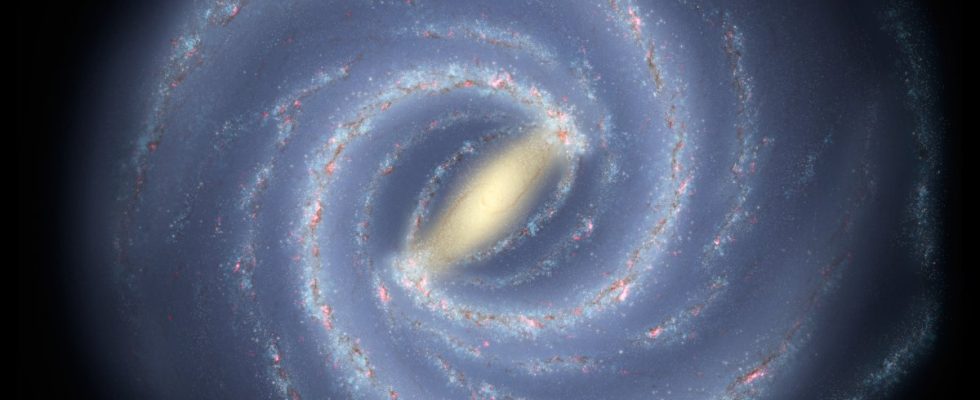The James Webb Space Telescope has once again provided data that challenges current theories about the evolution of the early universe. How the University of Durham from Great Britain explains, a research team has used observations from the state-of-the-art instrument to find that spiral and similar galaxies assumed stable shapes much earlier after the Big Bang than previously thought. The team traces this to visible bars at their center that regulate the rate of star formation by pushing interstellar gas into the heart of galaxies like our Milky Way. When they are fully formed, a galaxy is considered “adult”. These bars were discovered much more frequently in images of almost 400 galaxies than previously expected.
Advertisement
Stable conditions far too early

Image of a galaxy 10.6 billion years ago with a bar
(Image: Zoe Le Conte)
The research group led by doctoral student Zoe Le Conte evaluated 357 galaxies from around two to six billion years after the Big Bang. The James Webb Space Telescope (JWST) has seen around a billion years further back than its predecessor Hubble. 20 percent of the objects would have had such bars – three to four times as many as in previous analyses. This meant that the more powerful instrument was able to detect galactic bar formation much earlier, surprising the research group. It was actually expected that the universe would have been more turbulent at this time and experienced many more collisions of galaxies that could not stabilize. The prevailing theories on galaxy formation would therefore probably have to be revised.
The ones in the Work presented in Monthly Notices of the Royal Astronomical Society is now just the latest in a growing series of space telescope observations that do not fit our current understanding of the early universe. For example, since it became operational almost two years ago, it has continued to find galaxies that were many, much larger than previously thought possible. A few weeks ago there was also a galaxy collision, the discovery of which would have been an enormous coincidence if the theories are correct. The oldest black hole discovered by JWST is also far too massive. The apparently too early formation of the bars only fits into the picture.
(mho)

